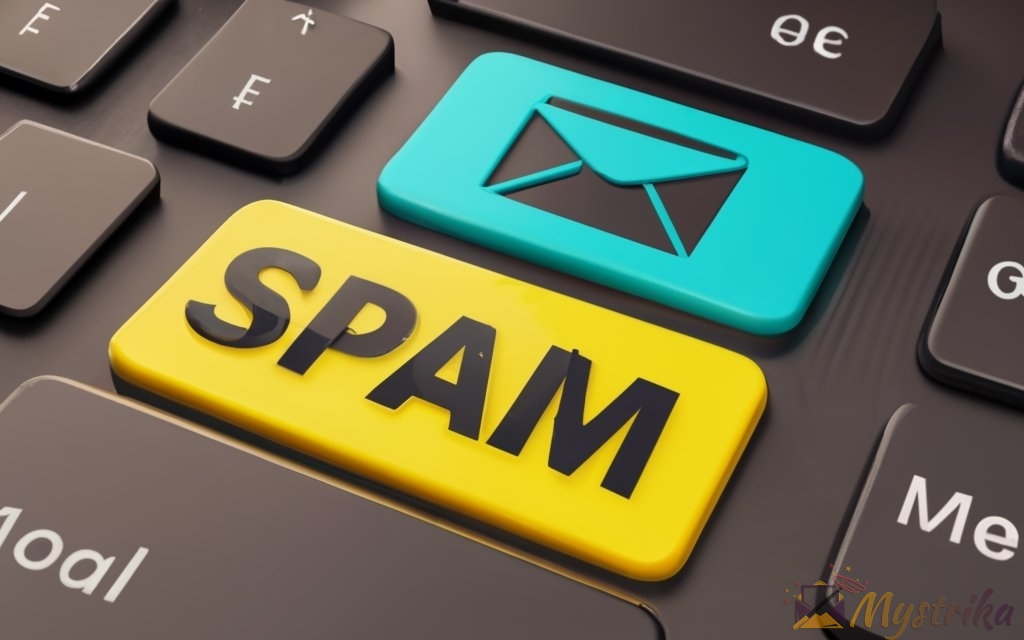Cold email can feel like a legal minefield. But when executed ethically, it drives results without breaking anti-spam laws. This guide examines regulations in the US, EU, Canada, UK, Australia and shares compliant best practices for structuring your cold outreach.
What is Cold Emailing?
Cold emailing refers to sending unsolicited emails to potential customers or clients you have no prior relationship with. It is a common tactic used in sales and marketing outreach campaigns. But if done incorrectly, cold emailing can sometimes get confused with plain old spam.
Definition of Cold Emails
A cold email is an unsolicited business email sent to a prospective customer or client that the sender has had no previous interaction with. This first contact email aims to grab the recipient’s attention, introduce the sender’s business, and motivate the prospect to take action like scheduling a call, viewing a demo, or making a purchase.
Cold emails are sent one-to-one to targeted individuals, not blasted out randomly in mass. They are personalized with the recipient’s name, company, and role and crafted to appeal specifically to their needs and interests.
The goal is to break through the noise in an inbox and compel the busy prospect to engage – no easy feat for an unsolicited message! That’s why cold email subject lines must be catchy yet honest, and email copy persuasive yet respectful of the recipient’s time.
Done right, cold emailing can be an inexpensive and effective tactic for:
- Generating new sales leads
- Building brand awareness
- Staying top of mind with potential customers
- Driving trial signups or new purchases
- Getting valuable introductions and referrals
But done wrong, cold emails can damage sender reputation, lower email deliverability, and even trigger spam filters.
Difference Between Cold Emails and Spam
Though unsolicited by nature, cold emails are distinctly different from spam.
- Cold emails are targeted and personalized. They are sent to specific individuals, not random or purchased email lists. Cold emails address the recipient by name and company, reference their role, and speak to their potential needs.
- Cold emails provide value. They aim to alert prospects to solutions that can help them, not just make a quick sale. Useful information and resources are offered.
- Cold emails are transparent. The sender is identified upfront along with their company. There is no deception.
- Cold email lists are sustainably sourced, through tools like LinkedIn Sales Navigator and Clearbit, not sketchy email scrapers.
- Cold emails are sent one-to-one, in limited volumes that avoid triggering spam filters. Send rates start low and build gradually.
- Cold emails can be opted out of via clear unsubscribe links. Recipient data is deleted upon request.
Spam, on the other hand:
- Is sent indiscriminately in massive volumes to purchased or scraped email lists.
- Contains untargeted, generic messages with no personalization.
- Often has misleading or deceptive subject lines and content.
- Comes from concealed, fake, or suspicious sender identities.
- Continues even after opt-out requests.
- Gets blacklisted or flagged as spam when reported.
So while cold emailing and spam both involve unsolicited messages, that is where the similarities end. Cold emails sent to targeted prospects in a transparent, valuable way are not considered spa

Are Cold Emails Considered Spam?
With the negative connotations around spam, it’s no wonder some people get cold email and spam confused. But they are distinctly different, as we’ll explore here.
What Qualifies as Spam?
There is no single universal definition of spam, but common descriptors include:
- Unsolicited – Recipient did not request or consent to receive the email.
- Indiscriminate – Sent randomly in mass volumes without targeting specific people.
- Commercial – Advertises products, services, or businesses.
- Anonymous – Sender address and identity are fake, hidden, or deceiving.
- Persistent – Continues sending messages despite spam reports and opt-out requests.
- Low value – Offers no useful information or value to the recipient.
- Malicious – Phishing attempts, viruses, or other harm to the recipient.
- Deceptive – Subject lines and content mislead the recipient.
The CAN-SPAM Act, America’s anti-spam law, defines spam more broadly as “any electronic mail message the primary purpose of which is the commercial advertisement or promotion of a commercial product or service.”
But context matters. An unsolicited commercial message sent one-to-one to a potentially interested prospect isn’t necessarily spam. Content, targeting, and sender reputation must be weighed.
Key Differences Between Spam and Cold Email
There are distinct differences between spam and thoughtfully executed cold email outreach:
| Spam | Cold Email |
| Mass blasted without targeting | Sent individually to selected prospects |
| Deceptive or misleading | Honest and transparent |
| From fake/concealed senders | Real company and contact info provided |
| Purchased email lists | Sustainably sourced data like Apollo |
| Offers no value to recipients | Seeks to inform and be helpful |
| Persists despite complaints | Honors opt-out requests promptly |
| High complaint and spam rates | Good sender reputation maintained |
To illustrate, here are examples of spam vs cold email:
Spam Email
Sender: “HotStkTipz” [email protected]
Subject: Make $10k/week with this 1 sneaky stock market trick!
Contents: Get-rich-quick scheme, phishing attempt, malware download, etc.
Cold Email
Sender: Ashley Thompson [email protected]
Subject: Data-Driven Insights – Research to Grow Your Business
Contents: Hello [First Name], I’m reaching out because I see Acme Co. is rapidly expanding into new markets this year. Our research services help enterprises like yours optimize expansion plans through location analytics, demand forecasting, and competitive intelligence. I’d love to schedule a quick call to see if there are any gaps in market intelligence you are looking to fill as you grow…
Spam is malicious, deceptive, and random. Cold email is transparent, targeted, and aims to inform.
Still, poor cold emailing practices like buying lists, blasting messages, using deceptive tactics, or ignoring opt-outs can blur this line. That’s why proper cold email strategy is so important.

Why Do Cold Emails Get Flagged as Spam?
Even when cold emails are crafted thoughtfully, they sometimes still get trapped in spam filters or marked as spam by recipients. Two key factors lead to this unwanted outcome:
Email Service Provider Spam Filters
The first line of defense against spam are the automatic spam filters used by popular email services like Gmail, Outlook, Yahoo Mail, and others. These evaluate incoming email and divert those deemed risky to the spam folder instead of the inbox.
Filters check emails for:
- Suspicious senders – Unknown email addresses, domains with no reputation, lack of authentication.
- Spam trigger words – Unsolicited, act now, free, guarantee, etc.
- Links to unsafe sites – Especially shortened URLs.
- Suspicious attachments – Could contain malware.
- Image-only content – Text needed for context.
- Deceptive practices – Disguised links, false headers, mimicking trusted brands.
Most filters take a “guilty until proven innocent” stance with new senders. Until a sender establishes a good reputation, emails risk getting labeled as spam.
Recipients Manually Marking as Spam
The other path to the spam folder is manual spam reporting by recipients. Even if an email gets past automated filters, the recipient can flag it as junk.
Their reasons for labeling a cold email as spam may include:
Deceptive Subject Lines
- Exaggerated or misleading language. E.g. “Act Now!” or “Free $100 Gift Card”
Irrelevant Content
- Message is generic, not personalized. Sender clearly didn’t research the prospect.
False Sense of Urgency
- Trying to force urgent action. E.g. “24 hour sale!” or “Reply needed ASAP!”
Sender Identity Concealed
- No name, company, address. Functioning “opt out” link.
To avoid rejection, carefully craft emails to inform and provide value. Personalize content with research. Use honest, relevant subject lines and avoid manipulative tactics. Identify yourself and company upfront.
Here are examples of red flags that may cause a recipient to report a cold email as spam:
Deceptive Subject Line
“Let’s discuss that urgent matter”
No context in subject line. Perceived as manipulative.
Irrelevant Content
“Hi there, just reaching out to see if you’d be open to learning more about Acme’s supply chain optimization services. Please let us know if interested.”
Generic outreach copy not tailored to recipient’s role or company.
False Urgency
“Hurry – 50% off pricing ends today only!”
Perceived as using pressure tactics.
Anonymous Sender
Sender: [email protected]
Contents: Hi, I noticed your company is expanding manufacturing capabilities…
No name, company, or contact information provided.
Fixes:
- Subject: “Acme – Supply chain modeling for expanded operations”
- Contents: Hello [First Name], Given [Company]’s planned expansion this year into 3 new factories, I thought Acme’s supply chain optimization services could be useful for modeling out production plans across locations…
- Sender: Jane Smith, Acme [email protected]
- Include mailing address and “opt out” link.

Cold Email Laws Around the World
Rules and regulations surrounding cold email vary across the globe. Let’s examine key laws in major markets.
States – CAN-SPAM Act
America’s CAN-SPAM Act, short for “Controlling the Assault of Non-Solicited Pornography and Marketing”, regulates commercial email. It applies to any electronic message advertised to promote business.
Requirements for Compliance
To comply with CAN-SPAM in the United States, cold emails must:
- Provide an opt-out method and honor unsubscribe requests within 10 days.
- Use accurate and non-misleading sender, subject line, and routing information.
- Identify the message as an ad or commercial outreach.
- Include the sender’s valid physical postal address.
Penalties for Violations
- Violations of CAN-SPAM can lead to fines of over $40,000 per non-compliant message.
- Jail time is possible for those knowingly deceiving recipients.
- Email providers may also ban senders violating CAN-SPAM rules.
European Union – GDPR
The EU’s General Data Protection Regulation (GDPR) governs data privacy protections for EU residents. It impacts cold emailing.
for Compliance
To comply with GDPR when cold emailing those in the EU, you must:
- Have a lawful basis for emailing the recipient such as prior consent or a legitimate interest.
- Inform recipients where their contact data was sourced.
- Provide an easy way for recipients to opt out or have their data deleted.
- Only email recipients who may find the message helpful and relevant.
Penalties for Non-Compliance
- Fines under GDPR can total €20 million or 4% of annual global turnover, whichever is higher.
- Businesses that violate GDPR may also face restrictions on data processing.
- Individuals impacted may pursue legal action against non-compliant companies.
United Kingdom – PECR, UK GDPR, DPA
Cold emailing laws in the UK stem from PECR, UK GDPR, and the Data Protection Act.
Requirements for Compliance
To comply with UK regulations, cold emails must:
- Obtain individual consent before emailing if not messaging a corporation.
- Honor opt-out requests and provide an unsubscribe method.
- Use accurate sender details and physical company address.
- Ensure subject line matches email contents.
Penalties for Non-Compliance
- Violating UK cold email laws can lead to fines of £500,000 under PECR and fines up to £17 million or 4% of global turnover under UK GDPR/DPA.
- The Information Commissioner’s Office (ICO) enforces complaints and levies fines.
- Individuals impacted may also pursue legal action for damages.
Canada – CASL
Canada’s Anti-Spam Legislation (CASL) has strict opt-in rules for sending cold emails.
Requirements for Compliance
To comply with CASL when cold emailing Canadians, you must:
- Obtain express consent from recipients before sending any commercial electronic message.
- Identify your full business name and contact information within emails.
- Provide an easy way for recipients to unsubscribe.
- Honor opt-out requests promptly.
Penalties for Non-Compliance
- Fines under CASL can potentially reach $10 million per violation.
- Regulators can also pursue uneven enforcement with daily penalties up to $1 million for non-compliance.
- Class action lawsuits are also possible under CASL.
Australia – Spam Act 2003
Australia’s Spam Act of 2003 regulates unsolicited commercial electronic messages.
Requirements for Compliance
To comply with the Spam Act when cold emailing Australians, you must:
- Obtain express or inferred consent before contacting a recipient.
- Accurately identify yourself, company, and contact details.
- Provide an obvious unsubscribe option.
- Honor opt-out requests promptly.
Penalties for Non-Compliance
- Violating the Spam Act carries maximum penalties of $1.3 million for companies and $250,000 for individuals per breach.
- The Australian Communications and Media Authority (ACMA) enforces the act.
- Those impacted can sue for damages under Australia’s anti-spam laws.
The core takeaway is that most developed countries now regulate unsolicited commercial emails to protect citizens from intrusive messaging. Be sure to comply with the cold emailing laws applicable to your prospects’ locations. Partnering with a trusted cold email platform that stays current on global regulations can help minimize compliance risks while still effectively reaching new leads.

How to Send Legally Compliant Cold Emails
Let’s explore best practices for structuring cold emails that align with anti-spam regulations across jurisdictions.
Avoid Deceptive Subject Lines
The subject line makes the crucial first impression on recipients and spam filters. To comply with anti-spam laws, avoid:
- Exaggerated or misleading language – Stick to simple, honest descriptions of your offering.
- Urgency or pressure tactics – Phrases like “Act now!” or “Limited time offer”. Give context if a deadline applies.
- Vagueness – Subject lines should summarize the topic sufficiently. “Urgent notice” lacks context.
- Using spam trigger words like “Free, “Deal”, “Offer”, “Secret”, “Guarantee”, etc.
Good cold email subject line examples:
- Acme Inc – Market intelligence for European expansion
- Expanding operations? Our supply chain modeling can help
- Compliance survey results from Acme Consulting
Bad cold email subject line examples:
- This week only – 50% off for valued customers!
- Don’t miss this exciting news!
- Urgent notice
- Free $100 Amazon Gift Card – Act Now!
The subject line should be relevant, personalized, and summarize the value being offered to the recipient.
Disclose Sender Identity
Never hide your identity when cold emailing. Clearly introduce yourself, company, and contact information right up front.
Include:
- Your full name and title
- Company name
- Company mailing address
- “Opt out” link
- Valid email address in the sender field
Obscuring identity makes your message appear deceptive and risks violating anti-spam laws. The prospect should immediately understand who the email is from.
Only Email Relevant Prospects
Legally, you need “consent” to cold email someone which often means having a legitimate reason for contacting them specifically.
Relevance stems from:
- Role or industry fit – Are they an ideal customer for what you’re selling?
- Company fit – Does their organization have a potential need or interest?
- Personalization – Know their name, company, role. Reference pain points.
Prospect lists must be sustainably sourced through tools like:
- LinkedIn Sales Navigator
- Clearbit
- ZoomInfo
- Seamless.ai
- Lusha
- Hunter.io
Avoid buying or scraping unvetted email lists which lack consent. Focus on quality over quantity.
Include Opt-Out Link
Per anti-spam regulations, cold emails must offer recipients a way to “opt-out” of receiving future messages.
Opt-out link best practices:
- Use simple text like “unsubscribe” or “opt out”. Avoid misleading terms.
- Link directly to a page to instantly process removal, no extra steps.
- Include at top and bottom of email.
- Honor opt-out requests promptly, usually within 10 days.
- Never charge a fee or require logging in to unsubscribe.
Without a clear opt-out method, your cold email risks violating consent rules and getting reported as spam. Give subscribers easy control.
Regularly Scrub Email Lists
Outdated, inaccurate data clogs inboxes and hurts sender reputation. Laws prohibit persisting after opt-out requests.
To maintain clean lists:
- Validate addresses before sending using tools like ZeroBounce or MailTester.
- Remove stale records like old leads or contacts.
- Watch for new spam traps and honeypots.
- Promptly process unsubscribes and bounces.
- Frequently re-confirm and update subscriptions to stay CAN-SPAM compliant.
Think of list hygiene as a routine practice, not just a one-off effort. Follow CAN-SPAM’s mandate to keep email lists current and maintained.
Warm Up New Sender Addresses
When starting cold email outreach, brand new sender addresses are unrecognized, risk getting flagged as spam, and have unestablished deliverability.
Gradually warming up the new sending domain/IP helps:
- Build sender reputation with email providers by sending legitimate mail.
- Gather metrics like open, clickthrough, and reply rates.
- Avoid triggering spam filters by taking it slow to start.
Warmup best practices:
- First send just 5-10 emails per day to real contacts.
- Slowly increase daily volume as deliverability improves.
- Target engaged recipients more likely to open and click.
- Monitor metrics like open, clickthrough, bounce, and spam complaint rates.
- Use dedicated warmup tools to automate the process.
With patience, you can safely condition new domains for compliant cold email sending at scale.

Conclusion and Key Takeaways
Cold email done right is an effective tactic for sales teams. As we’ve explored, it is entirely legal across jurisdictions – as long as sound strategies are followed.
Here are the key lessons to retain:
Cold email ≠ spam. They may both involve unsolicited messages, but thoughtful cold outreach is targeted, transparent, and delivers value. Spam is untargeted, deceptive, and nuisance-level.
Regulations vary globally. Be aware of major anti-spam laws like CAN-SPAM (U.S.), CASL (Canada), GDPR (E.U.), and Australia’s Spam Act. Requirements differ, but consent and opt-out methods are common themes.
Mind your subject line. Avoid exaggerated claims, pressure tactics, vagueness, or spam trigger words. Subject lines should summarize the value you offer recipients.
Identify yourself. Introduce your name, company, contact information, and physical address upfront in emails. Don’t conceal identity which breeds distrust.
Personalize content. Research prospects to reference their needs and roles. Generic outreach may get marked as spam. customize messages.
Provide opt-out links. Unsubscribe links are legally required. Make them obvious, direct, and quickly actionable without extra steps.
Focus on quality prospects. Legally, you need a reason to contact specific people. Build targeted lists sustainably via tools like LinkedIn and Clearbit.
Keep lists clean. Stale records drag down deliverability. Promptly process opt-outs and bounces. Frequently re-confirm active contacts.
Warm up new senders. Condition fresh domains by gradually increasing volume while monitoring metrics. Avoid triggering filters.
While local regulations impose rightful restrictions on email marketing practices, compliant cold outreach campaigns are both legal and high-performing sales tactics in markets worldwide.
As with any marketing activity, diligent strategy and execution is key – as is respect for prospects’ time and attention. By providing value and transparency, sales teams can reap benefits from cold email while also building recipient trust and goodwill. When done well, it’s a win-win.
For scalable cold email execution with deliverability baked in, solutions like Mystrika integrate compliant workflows. Prospect data stays protected while response metrics stay high.
So rest assured – cold email rocks on. Just brush up on regional guidelines, follow ethical practices, and let the conversations begin. With the right foundation, cold email outreach fuels more productive sales pipelines.

Summary
- Cold emailing is legal and an effective sales tactic when executed properly. It is not inherently spam.
- Regulations like CAN-SPAM (U.S.), CASL (Canada), and GDPR (Europe) impose requirements but allow compliant cold emailing.
- Avoid spam filters by using accurate data, transparent sender identity, and warm up strategies.
- Never use deceptive tactics in subject lines or content. Offer value through personalization and relevance.
- Include opt-out links, honor unsubscribes promptly, and keep email lists clean.
- Study regulations in your prospects’ jurisdictions and craft campaigns accordingly. Fines for violations can be steep.
- With careful strategy and compliance, cold email continues to deliver results and build relationships when done right.
- Solutions like Mystrika help automate compliant cold email workflows at scale.
Frequently Asked Questions
Is cold emailing completely illegal?
No, cold emailing is not outright illegal, as long as proper guidelines and regulations are followed. Laws like CAN-SPAM and CASL restrict certain practices but allow compliant cold email outreach.
What gets an email marked as spam?
Factors like suspicious senders, spam trigger words, misleading content, purchased lists, lack of opt-out, and more can trigger spam filters or recipients. Stay transparent and relevant.
Is cold email allowed under GDPR?
Yes, GDPR permits cold email given you have a lawful basis like consent or a legitimate interest. But recipients can request data removal and opt-out at any time.
How much are CAN-SPAM fines?
Each violation of CAN-SPAM can incur fines over $40,000 in the United States. Significant penalties apply in other regions as well.
What is considered consent for cold emailing?
Express written permission, a prior purchase, or publicly available contact info may constitute consent depending on jurisdiction. Most forbid purchased or scraped lists.
Can I buy cold email lists?
No, buying email lists is considered unsafe and usually violates anti-spam laws. Focus on sustainable prospecting through tools like LinkedIn and Clearbit instead.
What is a spam honeypot?
Honeypots are email addresses specifically set up to catch spammers. They detect when addresses are scraped or bought. Avoiding honeypots maintains compliance.
How do I warm up a new sending domain?
Gradually increase sending new domains from 5-10 emails per day up to scale as deliverability improves. Monitor metrics and avoid sudden volume spikes.
What happens if my emails get flagged as spam?
Getting labeled as spam can hurt deliverability long-term. Study anti-spam regulations, optimize campaigns, and use compliant cold email services.

